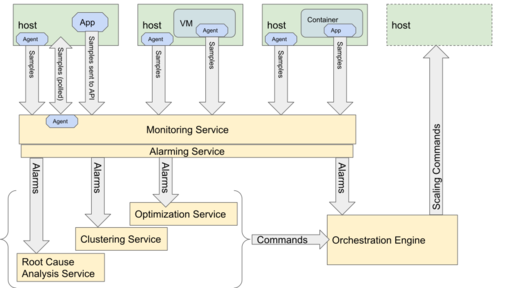Difference between revisions of "Auto-scaling SIG/Theory of Auto-Scaling"
Joseph Davis (talk | contribs) (→Conceptual Diagram) |
Joseph Davis (talk | contribs) m (→General Description) |
||
| Line 4: | Line 4: | ||
<fill in> | <fill in> | ||
| + | <what is the scope of auto-scaling, how does it differ from self-healing, what does it have in common with self-healing> | ||
== Conceptual Diagram == | == Conceptual Diagram == | ||
Revision as of 23:23, 15 May 2019
Contents
Theory of Auto-Scaling
General Description
<fill in> <what is the scope of auto-scaling, how does it differ from self-healing, what does it have in common with self-healing>
Conceptual Diagram
Components of Auto-Scaling
OpenStack offers a rich set of services to build, manage, orchestrate, and provision a cloud. This gives administrators some choices in how to best serve their customer's needs.
- Scaling units - There are a number of components that can be controlled with Auto-Scaling.
- Compute Host
- VM running on a Compute Host
- Container running on a Compute Host
- Network Attached Storage
- Virtual Network Functions
- Monitoring Service
- Alarming Service
- Monasca has a built in alarm thresholding service and notification service
- Aodh from the Telemetry project
- Decision Services - There are a number of services in OpenStack that can interpret metrics and alarms based on configured logic and produce commands to Orchestration Engines
- Congress
- Heat
- Vitrage
- Watcher
- Orchestration Engines
- Heat
- Senlin is a clustering engine for OpenStack, and can orchestrate auto-scaling
- Tacker
Considerations and Guidelines
- Monitoring takes resources, plan accordingly
- Avoid scaling too quickly or too often
- Don't expect instantaneous scaling (see above)
- Be aware of where the logic for scaling is (alarm thresholds, decision services)

